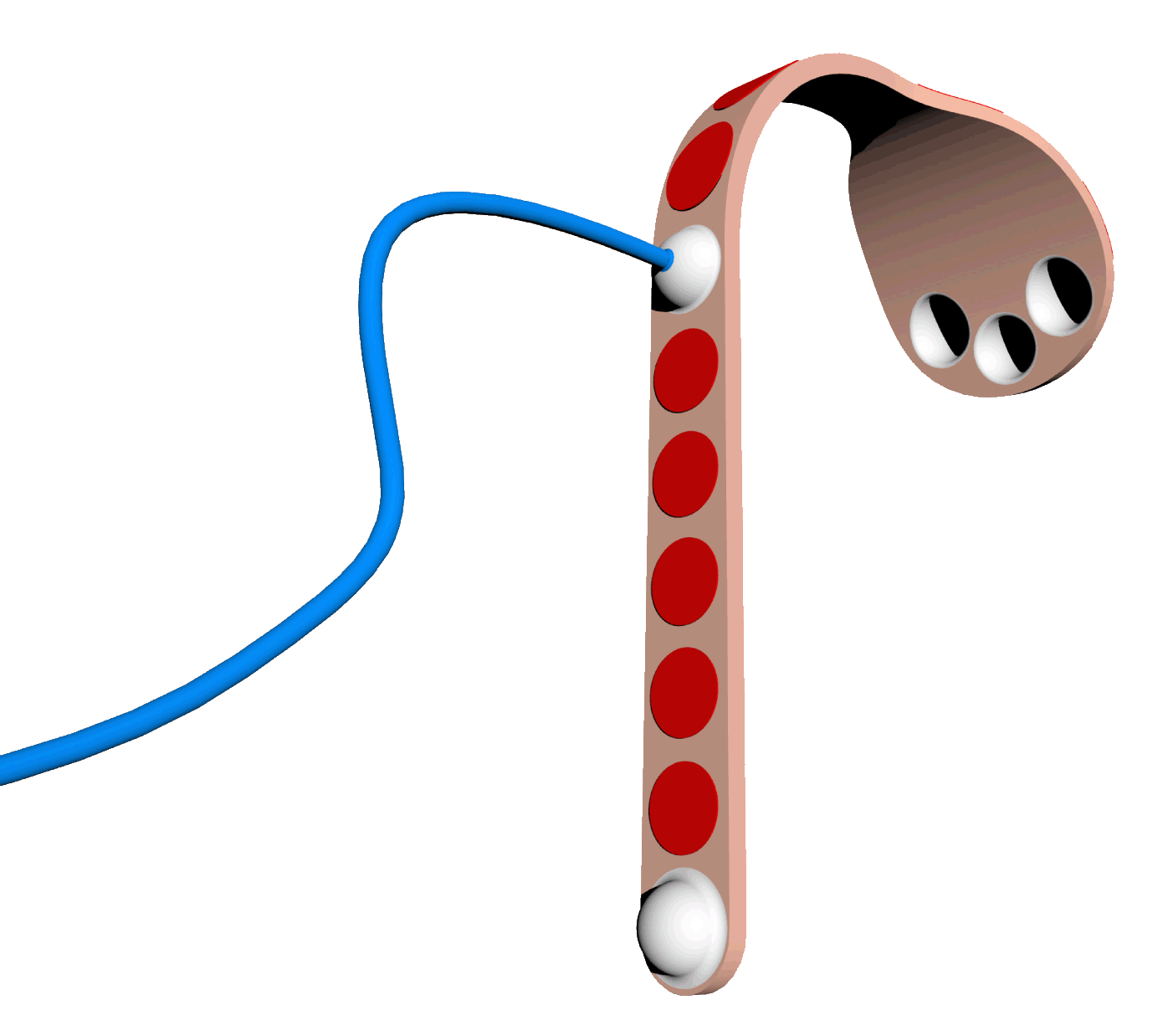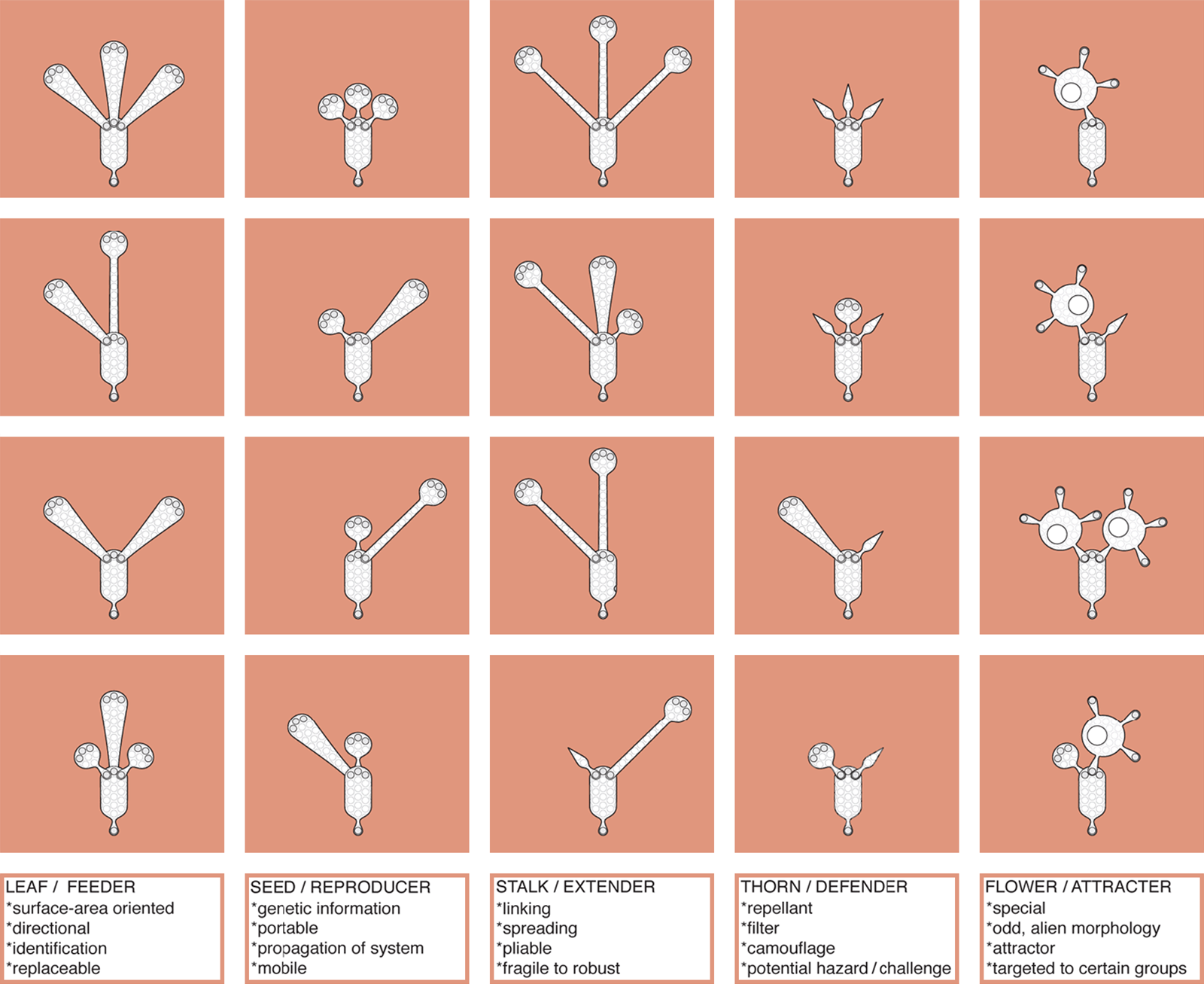weeds
sponsored by The Architectural League of New York (New York, USA)
collaboration with Thom Faulders

Our Weeds are designed to engage people who use Manhattan sidewalks. While we are prepared to make some assumptions about demographics that are more or less likely to find the Weeds compelling — and such assumptions informed the process by which we selected the five sites that we plan to use for the initial stage of deployment — we also expect to be surprised by people's reactions to the project.
Hopefully, some people will be seduced by these odd, temperature-sensing Weeds and make the effort to take them home. But they need not elicit such attention in order to propagate. If enough people give them a passing glance, they will be well on their way.
Weeds that propagate successfully in the environment of a Manhattan sidewalk share a set of general characteristics. Regardless of whether they have evolved biologically or been produced artificially, these weeds must have a morphology that enables the lineage to span niches without overly compromising the chances of survival in any specific environment. We address this criterion with a family of Weeds that includes several specialized forms that can be attached to different materials found along sidewalks (environmental fitness in a literal sense).
Most weeds that propagate sidewalks also have some mechanism for responding to cyclical changes in their environment, and the threats or opportunities that such change may bring. Our Weeds share this capacity; they blend into their surroundings during the day, when the chances that attracting attention will lead to destruction are highest, and they glow after dark, when such attention is more likely to result in dispersion and opportunities for further colonization. In addition to a means for responding to such cyclical change, we have imbued our Weeds with the capability of responding to intermittent and local changes in temperature, a feature that is relatively simple to implement and yet open to a broad range of interpretation and use. It is this ability to trace the patterns formed by local heat gradients, and how such patterns change over time, that we expect New Yorkers to find particularly compelling in the course of their initial interactions with our Weeds. It is on the basis of such initial interactions that deeper, systemic insights will be generated.
